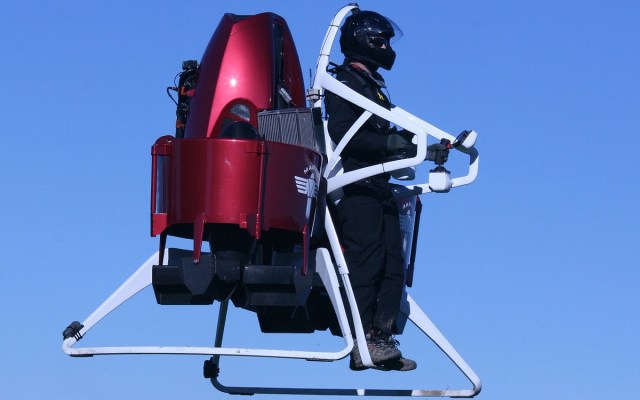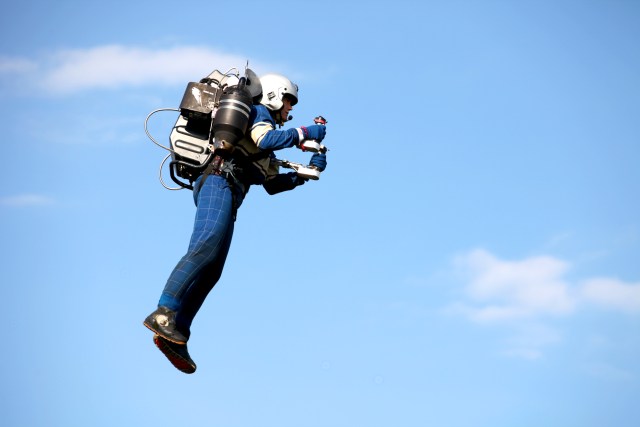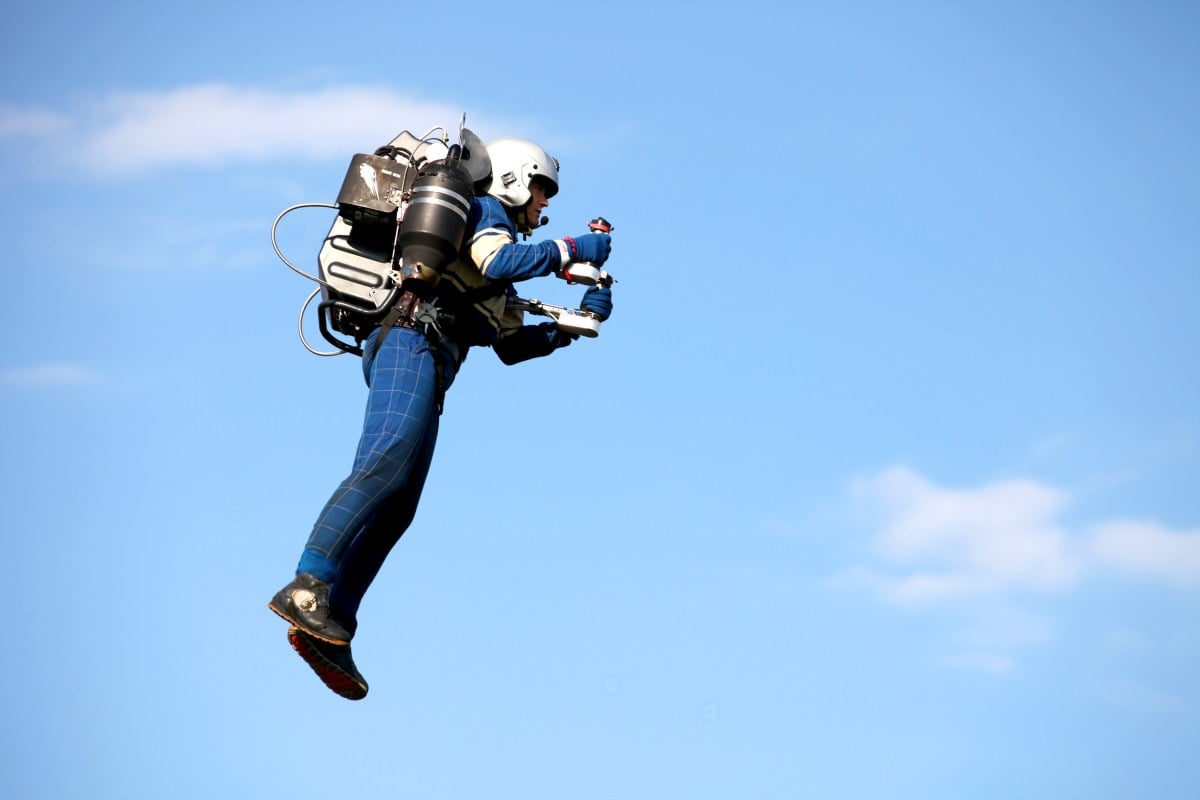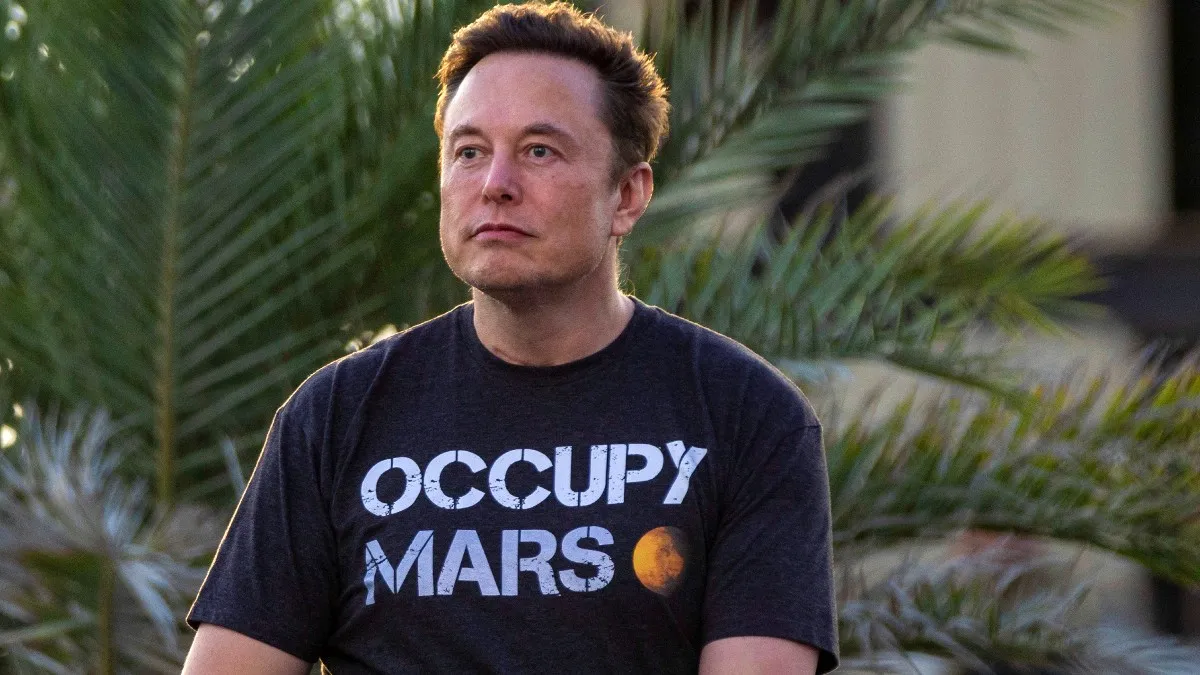Jetpack Aviation’s JB-9 bills itself as “the world’s only jetpack” — and that’s because it uses real turbojet engines to fly, just like a turbojet aircraft. But is it really the world’s only jetpack? That depends on your definition of “jetpack.”
The Martin Jetpack seems to be the main competitor here, but it’s a bit more like a helicopter, and it’s also significantly larger … although it’s still pretty cool, in a Moebius Chair sort of way:
 (image via Mashable)
(image via Mashable)
By comparison, the JB-9 looks much closer to what you might picture when you hear the word “jetpack.”
 (image via Jetpack Aviation)
(image via Jetpack Aviation)
It’s smaller, but it’s still capable of doing all the stuff you’d want a jetpack to do. Make Use Of reports that the JB-9 can reach “a top speed of about 60 miles per hour and a max altitude of 10,000 feet.” As seen in the video up top, which shows off the JB-9’s sustained flight around the Statue of Liberty last November, the jetpack’s pilot diverts their direction using hand controls to adjust the thrust and the tilt of the engines. The pilot can also use their body to tilt the direction by leaning left and right. All of that sounds exactly like how I’d want a jetpack to work, and yes, I want one.
But I’ll probably never get one, because this sort of gadget definitely falls under “absurd luxury item for eccentric billionaires,” as opposed to “useful, cost-efficient travel method that will improve my life.” Speaking of cost-efficiency (and the lack thereof), the JB-9 still could use a little improvement on that score. Make Use Of put it this way:
First, the JB-9 runs on kerosene instead of gasoline because that’s what turbojet engines are designed for. Second, the JB-9 only has a capacity of 10 gallons and consumes that fuel at a rate of 1 gallon per minute, for a total flight time around 10 minutes.
Let’s put that in terms that are more comparable. In New York at the time of this writing, gasoline costs $2.00 per gallon while kerosene costs $2.74 per gallon. That’s $24 per full tank versus $27.40 per full tank, respectively, and that comes out to $0.80 per minute (Martin Jetpack) versus $2.74 per minute (JB-9).
That 10-minute flight time could probably take me to and from the grocery store in style, but it would cost more than the groceries themselves. I realize the jet engine aspect is what makes the JB-9 a “true” jetpack, and all, but it’s too bad that this neat toy makes use of a fuel source that our planet could stand to stop using. Plus it’s an expensive fuel source.
How about a solar-powered jetpack? I guess we’d have to call that something else … any ideas?
(via Make Use Of)
—Please make note of The Mary Sue’s general comment policy.—
Do you follow The Mary Sue on Twitter, Facebook, Tumblr, Pinterest, & Google +?









Published: Mar 23, 2016 02:10 pm